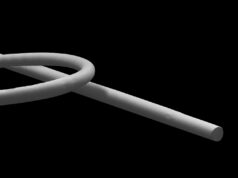
Sanjay Misra (Rochester, USA) discusses the need for pharmacological approaches that can improve successful, long-term outcomes with arteriovenous fistulas (AVFs) and outlines a handful of novel solutions on the horizon.
In 2017, about 750,000 US patients were diagnosed with end-stage kidney disease (ESKD), with a rising yearly incidence of 3%. Some 87% of these patients will require renal replacement therapy with haemodialysis. The Kidney Disease Outcomes Quality Initiative (KDOQI) recommends an autogenous AVF as the preferred vascular access for haemodialysis.
However, AVFs have a one-year patency of around 62%, requiring frequent percutaneous transluminal angioplasty (PTA) procedures, which cost more than US$4 billion per year. Of the roughly 200,000 PTAs performed, about 50% will fail at six months due to development of venous stenosis and neointimal hyperplasia causing reduced blood flow and suboptimal haemodialysis. The pathophysiology and molecular mechanisms of venous stenosis and neointimal hyperplasia after AVF creation are not understood and have been extrapolated from other vascular injuries, such as arterial stenosis formation. To date, there are no therapies that have been approved that reduce these formations.
Histologic examination of experimental and clinical specimens from failed haemodialysis vascular access shows that there is increased proliferation with the presence of inflammatory and smooth muscle cells accompanied with collagen matrix deposition leading to fibrosis and venous stenosis formation1. This is similar to other vascular injuries, including arterial stenosis and venous conduits in lower-extremity occlusive arterial disease.
Many therapies have been tested in arterial systems and then translated to the dialysis vascular access. One weakness of this approach is that, initially, patients who were not on dialysis were excluded from these studies2–4. Moreover, when dialysis is an independent risk factor for restenosis in all vascular beds. Therefore, it is important to test therapies for dialysis vascular access in preclinical models prior to embarking on large clinical studies.
There are new, exciting novel local therapies on the horizon that have been tested in preclinical animal models, including the rodent and the pig5. One of these is 1alpha,25-dihydroxyvitamin D3 (1α,25[OH]2D3)—which is active Vitamin D3—used in patients with chronic kidney disease (CKD) for calcium homeostasis. Our lab encapsulated it in polylactic-co-glycolic acid (PLGA) nanoparticles loaded in Pluronic F127 hydrogel (1,25 nanoparticles [NPs]).
Using male C57BL/6J mice and pigs with CKD, that periadventitial delivery of 1,25 NPs to the stenotic vein after PTA reduced venous stenosis/neointimal hyperplasia. Twenty-one days after PTA, 1,25 NP-treated vessels had increased lumen vessel area, with decreased neointima area/media area ratio, and a reduction in inflammatory cells, fibrosis, and proliferation6.
Moreover, periadventitial delivery of 1,25 NPs to the stenotic vein after PTA in an experimental model of rodents reduces venous stenosis/neointimal hyperplasia too. Another one of these technologies is local delivery of nitric oxide-releasing gel aimed at reducing venous stenosis formation7. First-in-human studies are being planned with these technologies.
References:
- Brahmbhatt A, Remuzzi A, Franzoni M, et al. The molecular mechanisms of hemodialysis vascular access failure. Kidney Int. 2016; 89(2): 303–16.
- Rocha-Singh K J, Duval S, Jaff M R, et al. Mortality and Paclitaxel-Coated Devices: An Individual Patient Data Meta-Analysis. Circulation. 2020; 141(23): 1859–69.
- Selzman C H, Miller S A, Zimmerman M A, et al. Monocyte chemotactic protein-1 directly induces human vascular smooth muscle proliferation. Am J Physiol Heart Circ Physiol. 2002; 283(4): H1455–61.
- Dake M D, Ansel G M, Jaff M R, et al. Durable Clinical Effectiveness With Paclitaxel-Eluting Stents in the Femoropopliteal Artery: 5-Year Results of the Zilver PTX Randomized Trial. Circulation. 2016; 133(15): 1472–83; discussion 83.
- Singh A K, Cai C, Kilari S, et al. 1alpha,25-Dihydroxyvitamin D3 Encapsulated in Nanoparticles Prevents Venous Neointimal Hyperplasia and Stenosis in Porcine Arteriovenous Fistulas. J Am Soc Nephrol. 2021; 32(4): 866–85.
- Cai C, Kilari S, Zhao C, et al. Adventitial delivery of nanoparticles encapsulated with 1alpha, 25-dihydroxyvitamin D3 attenuates restenosis in a murine angioplasty model. Sci Rep. 2021; 11(1): 4772.
- Somarathna M, Hwang P T, Millican R C, et al. Nitric oxide releasing nanomatrix gel treatment inhibits venous intimal hyperplasia and improves vascular remodeling in a rodent arteriovenous fistula. Biomaterials. 2022; 280: 121254.
Sanjay Misra is a professor of radiology in the Department of Radiology at the Mayo Clinic in Rochester, USA.
The author declared no relevant disclosures pertaining to this article.












